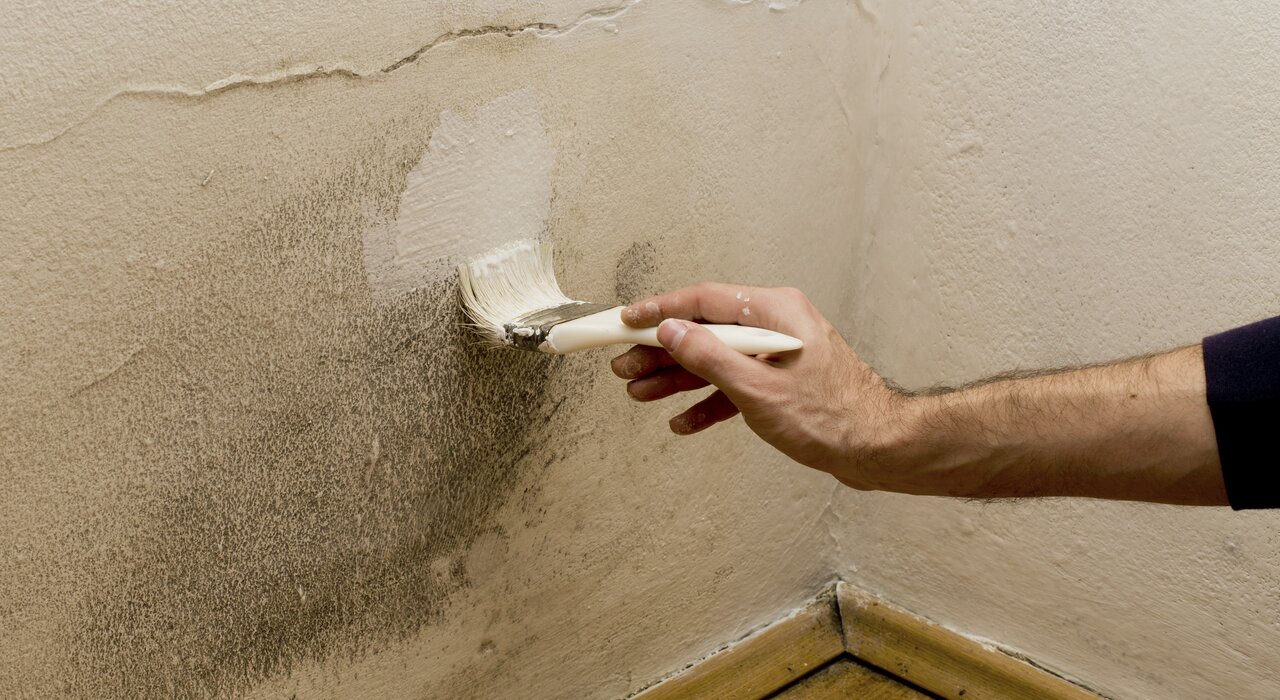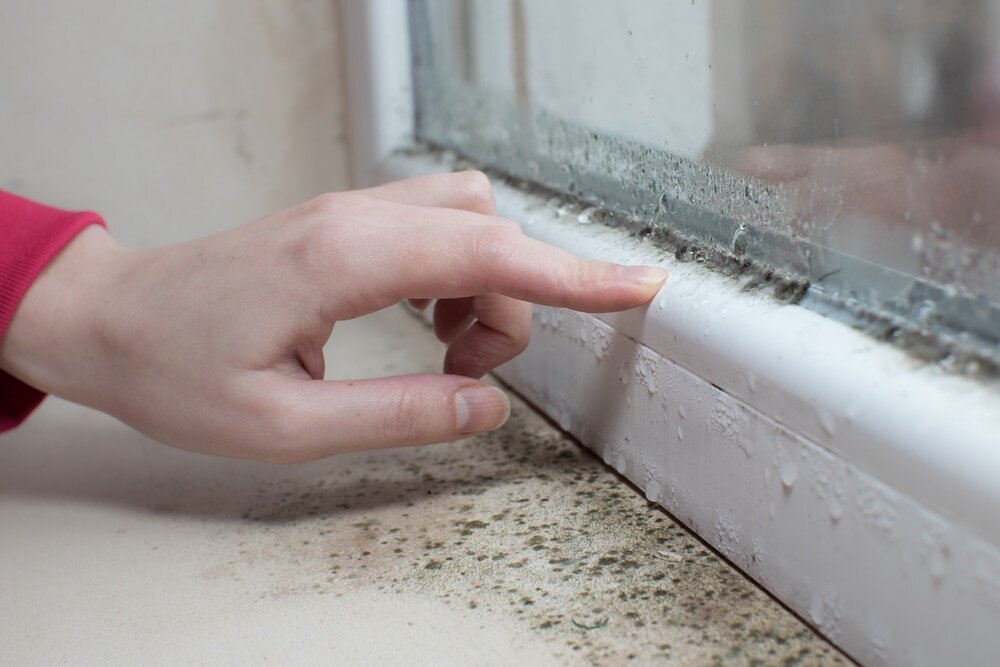
- Causes of damp walls
- Condensation
- Penetrating damp
- Rising damp
- Risks of painting over damp walls
- Deterioration of paint and wall coverings
- Mould and mildew growth
- Structural damage
- Masking of underlying issues
- Reduced property value
- Proper steps to address damp walls
- Step 1: Identify and eliminate the source of moisture
- Step 2: Dry out the affected area
- Step 3: Treat the damp
- Step 4: Choose the right paint and products
Damp on the walls is a common issue in many homes, particularly in climates with high moisture levels. Whether it's the aftermath of flooding, leaky plumbing, or just the result of living in a particularly damp environment, moisture in your walls can lead to many problems, not least of which is the potential for mould and structural damage. A quick fix might seem tempting, but is painting over damp walls a solution?
Causes of damp walls
To effectively manage damp in your home, gaining a deeper understanding of the various causes is essential. Each type of damp has specific sources and mechanisms, making it crucial to identify the problem and apply the right solution correctly.
Condensation
Condensation is the most common form of dampness in homes and occurs when moist air comes into contact with a colder surface like a wall or window, causing water droplets to form.This type of damp is prevalent in rooms with a lot of moisture in the air, such as kitchens, bathrooms, and bedrooms where people breathe out moisture overnight. Factors that exacerbate condensation include:
- Poor ventilation: Without adequate air circulation, moist air cannot escape.
- Lack of insulation: Cold surfaces in the home can attract warm, moist air.
- Everyday activities: Cooking, showering, and even drying clothes indoors can increase indoor humidity levels significantly.
Improving home ventilation, using dehumidifiers, and maintaining a consistent indoor temperature can help manage and prevent condensation.

Penetrating damp
Penetrating damp occurs when water from outside makes its way inside through weaknesses in the building structure. Unlike rising damp, penetrating damp can affect walls at any level, not just near the ground. Common causes include:
- Leaking pipes: Faulty plumbing can lead to water seeping through walls and ceilings.
- Roof damage: Missing tiles or damaged roofing materials allow water to enter the building.
- Window issues: Improperly sealed or ageing window frames can allow moisture ingress.
- External wall damage: Cracks in the walls, defective pointing, or damaged render can provide entry points for water.
Addressing penetrating damp involves repairing the structural issues that allow water into the building and possibly applying water-repellent treatments to external walls.
Rising damp
Rising damp results from ground water moving up through a wall or floor. Most buildings have a damp-proof course (DPC) to block this, but moisture can rise through capillary action if the DPC is damaged or absent. Key indicators and causes include:
- Age of building: Older buildings may not have a DPC or have degraded over time.
- Groundwater level: High groundwater levels can exacerbate the problem, especially in areas prone to flooding.
- Building materials: Some materials are more susceptible to rising damp than others, like brick and mortar, which can absorb moisture if not properly sealed.
Treating rising damp typically involves installing or repairing a damp-proof course and possibly using other techniques to protect building materials from moisture.
Risks of painting over damp walls
Painting over damp walls without addressing the underlying moisture issues can lead to significant risks and potential problems.
Deterioration of paint and wall coverings
Moisture trapped under the paint layer can cause paint and other wall coverings to lose adhesion, resulting in peeling and flaking. This requires frequent touch-ups or repainting and leaves walls looking unsightly and neglected. Moisture can also cause paint to bubble and blister, compromising the paint job's finish and integrity.
Mould and mildew growth
Mould thrives in damp conditions and can start to grow on and behind the paint. Mould spores can lead to respiratory problems, allergies, and other health issues, particularly in children, the elderly, and those with pre-existing health conditions. Mould doesn’t just stay on the surface; it penetrates materials, causing further degradation. Cleaning and removing mould can be difficult and sometimes requires completely removing the affected materials.
[caption id="attachment_69642" align="aligncenter" width="1000"] Condensation and black mould due to poor ventilation[/caption]
Condensation and black mould due to poor ventilation[/caption]
Structural damage
Moisture can weaken building materials like wood and plaster. Over time, damp can cause these materials to rot or crumble, compromising the walls' structural integrity. Ignoring the initial problem and allowing moisture to persist can lead to more severe structural issues that are much more expensive to repair later.
Masking of underlying issues
Painting over damp can hide the true extent of moisture issues, leading to delayed diagnosis and treatment. This can allow the problem to worsen unnoticed until it becomes severe and much more difficult to manage. By not addressing the root cause of dampness, the problem will likely recur despite any superficial measures taken. This results in wasted resources and efforts in repeatedly dealing with the same issue.
Reduced property value
Visible damp and mould can deter potential buyers and reduce the aesthetic appeal of a home. Prospective buyers might view the damp issues as a sign of neglect, potentially leading to reduced property values and difficulties in selling the property.
Proper steps to address damp walls
Step 1: Identify and eliminate the source of moisture
If yom're unsure about the source of dampness, hire a professional to assess the situation. Once identified, take appropriate steps to eliminate it, such as repairing leaks, improving external drainage, or installing ventilation.
Step 2: Dry out the affected area
The walls must be completely dry before any further work is undertaken. Depending on the extent of dampness, this might involve dehumidifiers, heaters, or natural ventilation.
Step 3: Treat the damp
Once the walls are dry, treat them with a damp-proofing product. These products can help prevent future moisture penetration, but follow manufacturer guidelines closely or seek professional help.
Step 4: Choose the right paint and products
When it’s time to paint, opt for a paint specifically designed for damp-proofing. These paints are usually water-resistant and allow walls to breathe, thus preventing moisture from being trapped.Painting over damp walls is not a viable long-term solution. It's a cosmetic fix that ignores underlying problems and can lead to more significant damage over time. By identifying the cause of damp, addressing it at the source, and using the right materials, you can ensure that your walls look good and are also healthy and structurally sound.
